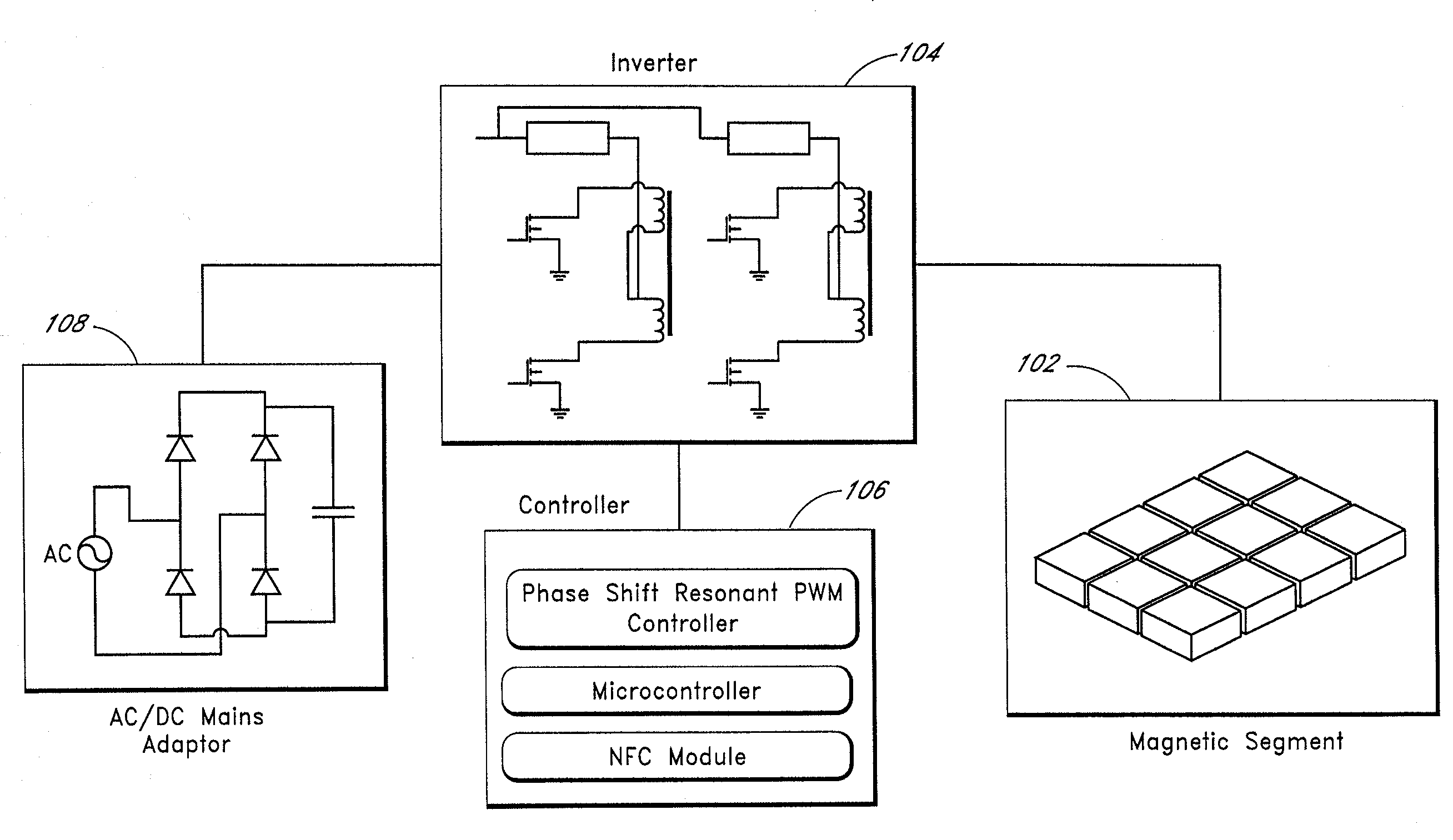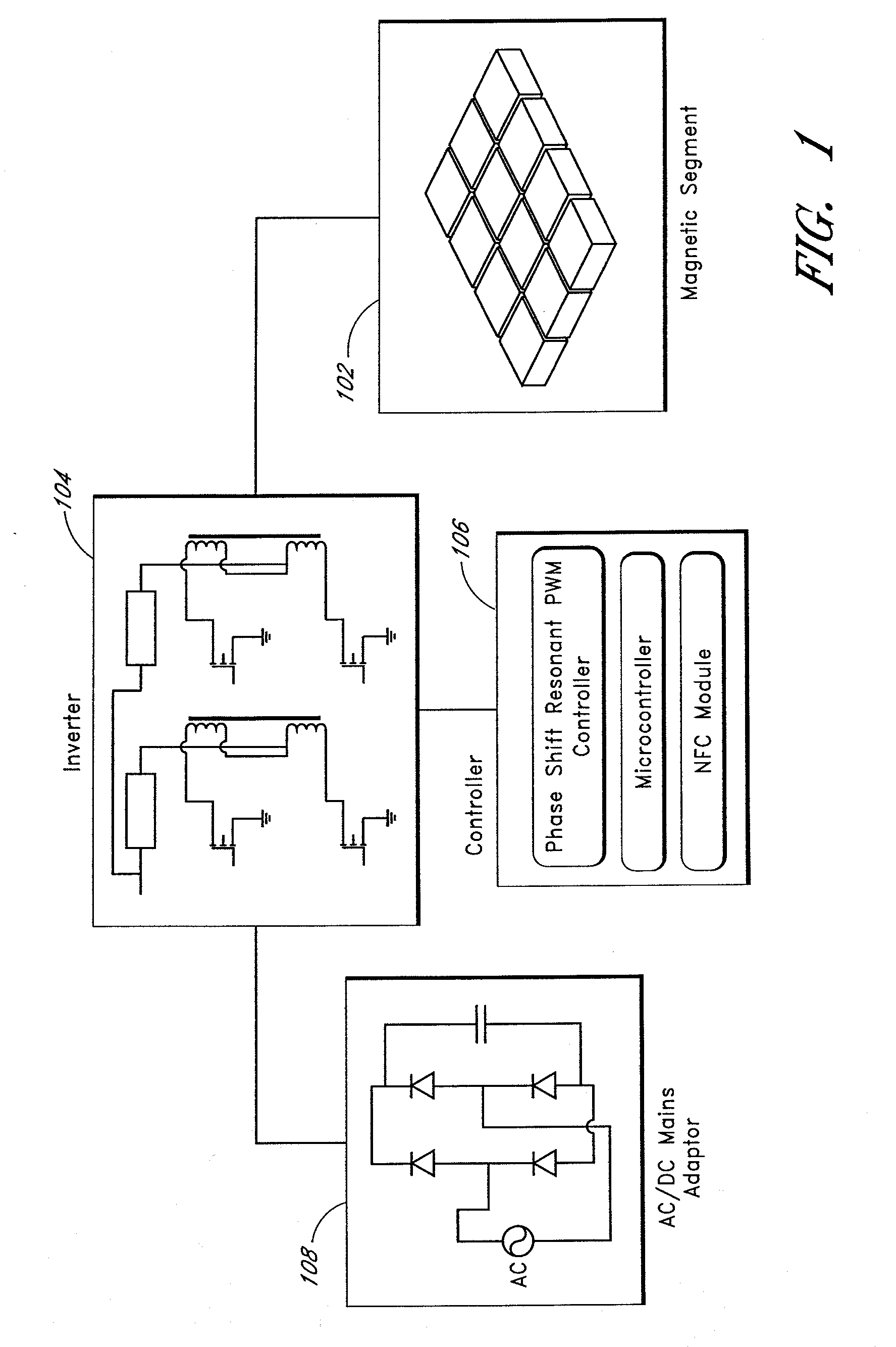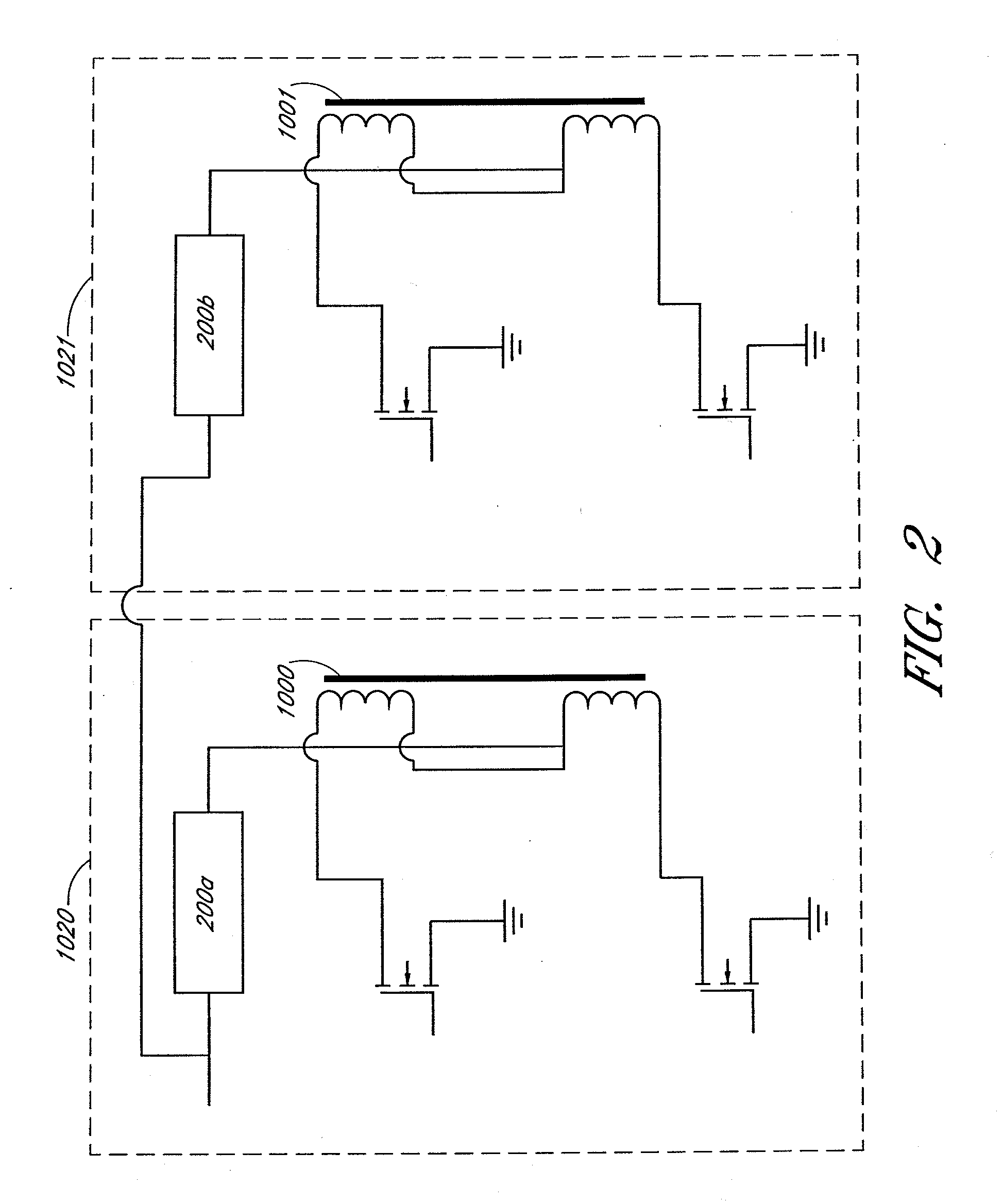Systems and methods for wireless power transfer
a wireless technology and wireless technology, applied in the field of electrical equipment, can solve the problems of inconvenient or safe opening of electrical contacts, inability to meet the needs of hard-wearing users, physical difficulty in implementing direct charging using wireless technology on existing portable devices, etc., and achieve the effect of satisfying users' requirements
- Summary
- Abstract
- Description
- Claims
- Application Information
AI Technical Summary
Benefits of technology
Problems solved by technology
Method used
Image
Examples
Embodiment Construction
[0058]One embodiment is directed to a new generation is wireless power transfer. FIG. 1 illustrates one embodiment. The primary-side magnetic surface includes a mosaic of high-permeability micro-tiles. Cores for the micro tiles can be made from a high permeability material, such as ferrite. Other materials can be used. In one embodiment, the relative permeability of the material for the core is at least 20.
[0059]The use of 12 tiles is for illustrative purposes and is not intended to be limiting. These tiles can vary in size, for example, between 3-5 mm in thickness, and 10-20 mm in length and width. These dimensions are intended to be illustrative and not necessarily limiting. These micro-tiles form a magnetic segment 102 or array of micro-tiles. This segment 102 is powered by a switched mode power electronics circuitry, which includes an inverter 104 and a control system 106. The switched mode power electronics circuitry in turn receives a DC input from the mains adapter 108 which ...
PUM
| Property | Measurement | Unit |
|---|---|---|
| length | aaaaa | aaaaa |
| thickness | aaaaa | aaaaa |
| thickness | aaaaa | aaaaa |
Abstract
Description
Claims
Application Information
 Login to View More
Login to View More - R&D
- Intellectual Property
- Life Sciences
- Materials
- Tech Scout
- Unparalleled Data Quality
- Higher Quality Content
- 60% Fewer Hallucinations
Browse by: Latest US Patents, China's latest patents, Technical Efficacy Thesaurus, Application Domain, Technology Topic, Popular Technical Reports.
© 2025 PatSnap. All rights reserved.Legal|Privacy policy|Modern Slavery Act Transparency Statement|Sitemap|About US| Contact US: help@patsnap.com



